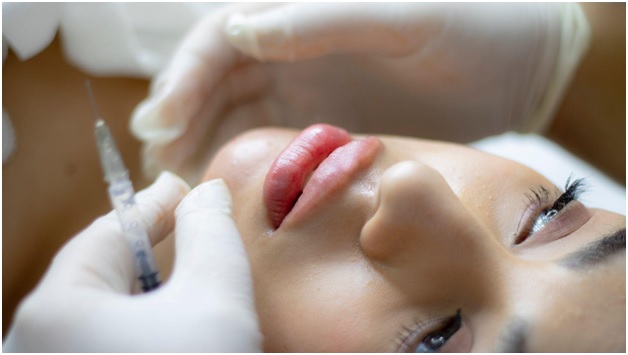Dermal fillers are a common and less invasive way to defy aging. These injectables can eliminate your unwanted facial lines and wrinkles, which get in the way of looking fresh and young.
According to the American Society of Plastic Surgeons, over 2.7 million dermal filler procedures were conducted in 2017. The data suggests that more and more people accept this method as an effective anti-aging method.


But are dermal fillers safe for the skin? Do they have repercussions on your health?
Find out if a dermal filler is harmless for your journey to smoother and better facial skin.
What are dermal fillers?
Dermal fillers are gel-like substances injected under the skin to help smoothen the skin’s appearance and reduce signs of aging, such as creases, wrinkles, and folds.
With dermal fillers, these facial imperfections become smoother, specifically in the most visible parts—under-eye circles, cheekbones, and the corners of the mouth.
Aside from eliminating facial lines, the advantages of dermal fillers also include the following:
- Enhances thin lips and makes them plump
- Lifts cheekbones
- Rejuvenates the hands
- Improves facial contours and makes them well-defined
- Soften wrinkles and folds
- Lessen visibility of scars
- Reconstructs deformities in the face
Injecting dermal fillers is a minimally invasive procedure that addresses the lack of elasticity. As you age, the body loses its capacity to produce enough elasticity in the skin, resulting in the development of smile lines and crow’s feet.
Are dermal fillers safe?
Undergoing a dermal filler injection procedure is typically safe and convenient. The key to a safe dermal filler procedure is to get a board-certified and experienced dermatologist or cosmetic surgeon who only uses FDA-approved dermal fillers for their patients.
These trained professionals underwent rigorous certification courses to perform safe cosmetic practices.
They also know how to properly conduct assessments before the procedure and provide a thorough aftercare measure to ensure that injectables will work fine on your face.
What are the common side effects of dermal fillers?
While dermal fillers are generally safe, procedures like this also come with a few health risks that you need to expect.
These risks are common and may go away a week after the procedure. The symptoms can also be reduced with over-the-counter medications that your doctor will prescribe after the procedure.
- Bruising, swelling, and redness in the injection area
- Tenderness and pain
- Itching and rashes
- Difficulty in holding and carrying objects for fillers injected into the hand
Your cosmetic surgeon will conduct a skin test before injecting it into your skin to avoid allergies and irritation.
Are there any long-term effects of dermal fillers?
The effects of these injectables can last from six to 12 months. You may have to return to your cosmetic surgeon for another round of injectables after a year to prevent your wrinkles from reappearing.
However, take note that if you undergo dermal fillers for years, you can experience long-term risks, including:
- Muscle weakness. Poor muscle performance in the head, face, and neck.
- Difficulty in swallowing
- Complications in eye movements
- Problem with vocal cord function
These health risks do not apply to everyone who undergoes dermal filler. It still depends on your health condition and the type of filler you use. Ask your doctor about the specific long-term effects of your dermal fillers.
Are all dermal fillers alike?
Dermal fillers vary in purposes, chemical components, and duration of their effectiveness. The types of dermal fillers also differ in the degree of softness as the soft fillers are for the lips, while the sturdier ones are for cheekbones.
Your skin specialist will determine the correct type of dermal filler, depending on your skin’s condition and how your body will react to the substances.
Here are the different types of dermal fillers and their corresponding uses:
- Calcium hydroxylapatite. A mineral-like chemical primarily found in human bones. It can enhance your cheeks to make them fuller and improves your facial contours. This filler has a lower risk of allergic reaction and shows a very natural result.
- Hyaluronic acid. A natural substance found in soft connective tissues and fluid surrounds the eyes. It helps alleviate acne scars, crow’s feet, facial scars, and cheek depressions. Injectable hyaluronic acid is one of the most used fillers.
- Polyalkylimide. A semi-permanent dermal filler used by surgeons to treat wrinkles and enhance cheekbones and jawlines. It is also a solution for plumping thin lips.
- Polylactic acid. A synthetic dermal filler that triggers the body to produce collagen. When injected into your face, commonly on the lower half, you can reduce the appearance of lines and folds.
- Polymethyl-methacrylate microspheres (PMMA). This semi-permanent filler is used to treat moderate to severe wrinkles and furrows. If you want a more permanent solution, PMMA can have lasting effects compared to hyaluronic acid and collagen replacement therapies. However, you must wait at least three months to see its effectiveness.
Talk to your dermatologist
Your dermatologist determines the best dermal filler for you. Before undergoing the procedure, you will have to be assessed by your doctor to find out what filler fits your needs.
You may also have to inform your health provider of any underlying condition and the medicines you are taking to ensure that your dermal filler will not result in complications.















